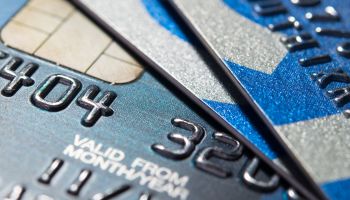Bad BIN setup can cost you millions…
Take some time to weigh how your plastic card issuance is structured
- |
- Written by Dan Fisher
- |
- Comments: DISQUS_COMMENTS
 Obvious and mediocre won’t be found here—but “Why didn’t I think of that?” will! Challenging the banking status quo is Dan “The Wombat” Fisher’s personal mission.
Obvious and mediocre won’t be found here—but “Why didn’t I think of that?” will! Challenging the banking status quo is Dan “The Wombat” Fisher’s personal mission.
In a world where customers remain constantly connected to friends, services, email, and financial institutions, the Bank Identification Number (BIN) is the key.
Found on credit, debit, and ATM cards is a 16-digit number that identifies the card brand (American Express, MasterCard, Visa, and others), your bank, and the customer account number. The number represents the BIN and this number can control your entire plastic universe.
What do you really own?
The debit card has replaced the check. In essence, the lion’s share of all small payment transactions your customers, business, or retail have are completed using the BIN found on your debit cards.
So, if your institution does not own your BINs, you do not control your card base and it can cost you millions, depending on your size. The exception is ATM Card BIN numbers, which are issued by the American Bankers Association directly to each financial institution. Otherwise, the debit BIN can either be issued to and owned by your institution or to the entity that controls your card and transaction processing.
Not owning your BIN translates into having zero control over the card database, activity reporting, card features, and marketing, because the BINs are shared with other financial institutions who also use your processor.
Not owning your BIN can also cost you in customer disruption if you decide to move to another processor. All cards will need to be re-issued, because if you leave shared BINs can’t be taken with you.
Here’s some math
De-conversion fees alone can cost your institution over $100,000 per card product. Doing the math, if you have a retail debit card, a business debit card, and Health Savings Account card, that can add up to three shared BINs and $300,000 in de-conversion costs.
Now let’s make the math a bit more fun.
Add the fact that your institution acquired three smaller financial institutions, of which two had three shared BINs each and the other four respectively, you are now looking a $1 million in de-conversion costs alone—just for the new customers.
Now, the impact on strategic position …
Bottom line, thinking you have options, you quickly realize that you have none.
You are stuck, held hostage by a shared BIN. Forget just adding features for your customers to use … how about all of the money you’re about to spend on upgrading your debit cards to EMV … and you don’t own them.
What is a huge waste! Interchange income? That is another issue altogether. What next?
Think about this today
Over the next couple of years, financial institutions coast-to-coast will be upgrading debit cards and thinking about changing processors.
Before you do anything, be it a service request for an EMV card issue program or adding any new feature to your card base, you need to stop and take a hard look at your debit card portfolio. Consider how you are processed and your processor. The next decision could cost your institution millions and you won’t even know it before it is too late.
First, contact an independent payment system professional and have your debit card portfolio and processor evaluated. The cost is nominal relative to what it could cost your institution if you don’t.
This could be the best call you make in 2016. It could increase your revenue and improve your debit card portfolio performance. And make your debit card the one everybody has got to have in their wallet.
It could save your institution seven figures—and place you back in the driver’s seat that you thought you were in.
—The Wombat!
Tagged under Payments, Blogs, Beyond the Bank, Cards,














